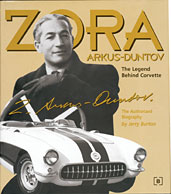Technical Paper
‘Motoring Which?’ — Eighteen Years of Human Factors in Comparative Car Testing — An Historical Review
1980-02-01
800332
In 1961 the Consumers’ Association in Britain set up a car test unit, and in 1962 the first car test reports were published. These later became the ‘Motoring Which?’ quarterly supplement to ‘Which?’ magazine. The methods and general sequence of the CA car testing procedure are first outlined. The Human Factors contribution to this testing programme is then described. The contribution broadly takes two forms. First, human factors reference data and guidance are provided to assist with the planning and interpretation of the objective measurement programme run by the test unit. Second, an extensive Human Factors Questionnaire (HFQ) programme is organised, and the results are reported, quarterly for every group of test cars. The initial planning of the Human Factors contribution is described; then the essential features of the HFQ programme, and its successive stages of development over the years to the current form with computerised analysis and output are reviewed.

